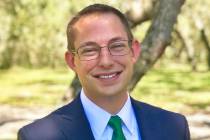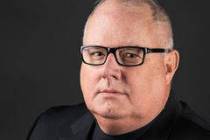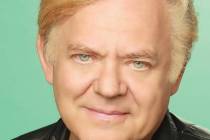Growing, historic Boulder City faces inevitable change
Change is inevitable, but it can be controlled and be positive or it can be left unchecked and be detrimental. Historic Boulder City has been subject to many changes over the years. Most of those changes have been necessary for the survival of a small city in an ever-changing world.
Of course, there are certain aspects of the city that will never change.
Boulder City will always be the city that built Hoover (Boulder) Dam. Even though the last of the men who worked on the dam is now deceased.
Boulder City is historic and has been placed on the United States National Register of Historic Places.
The Boulder Dam Hotel, surviving many up and downs, remains a valuable historic asset. It, too, has been placed on the National Register.
But, naturally, many things have changed. Because of the growth of Clark County, change has come.
There was once a time when local businesses provided most of the commercial needs of the city. There were dress shops, a men’s store, a department store, two drug stores, and a jewelry store, to name a few. That changed when shopping meant only a short trip on a freeway to a large shopping mall that had everything under one roof. That was a change that could not be overcome, regardless of tradition.
Filling stations once operated at the corners of Arizona and Wyoming streets. They are gone, but the openness of those corners was retained. The changes that came were managed and compatible with the original streetscapes.
And, of course, there are many things that have changed because of the city’s growing population.
Two of the original four churches built in 1932 have relocated: The Church of Jesus Christ of Latter-day Saints to Fifth Street and Avenue G and St. Andrews Catholic Church to San Felipe Drive, just south of Adams Boulevard. Relocation was the only way to accommodate growing memberships, but the new locations were developed and carefully planned as positive additions to the community.
The original Boulder City Elementary School and High School are now City Hall and the recreation center. A new senior/junior high school was opened in 1953 to make room for an ever-growing student population.
As for Boulder City High School, or any building dating from the early 1950s, upgrades have been necessary and the numerous changes that have been made to BCHS were compatible with the school’s needs. However, arbitrary change is risky for a school that prides itself on excellence and tradition. The Clark County School District’s present plan for “upgrading” Boulder City High School will only degrade the entire learning environment of the school’s classrooms.
As background, consider this: In 1956 the state Legislature mandated the consolidation of all state school districts into 17 county school districts and Boulder City schools lost local control. Before that time, every person employed by the Boulder City School District lived in the city and had a vested, personal interest in the success of the schools and the maintenance of the very highest standards of education.
Boulder City High School is now one of almost 70 high schools in the Clark County School District, whose total enrollment in 1956 was just over 20,000, but by 2013 had exploded to 307,574. A “one-size-fits-all” philosophy cannot be in the best interests of a high school with an enrollment of less than 700 struggling to compete with all other high schools in the fifth largest district in the country.
Upgrades are needed at BCHS, but just how does the CCSD plan to upgrade the heating/cooling system, electrical and other systems in a school that was built to provide the best possible learning environment for its student body? How else but to tear it all down and rebuild it to meet the lowest standards required for the entire district. How can smaller classrooms, no windows and artificial lighting even be considered for Boulder City High School?
City Hall must surely have the power to negotiate the manner in which BCHS can be upgraded and preserved. The tradition of excellence cannot be lost for Boulder City High School.
Susan Stice McIntyre is a native of Boulder City, a first-generation 31er, and former member and chairman of the Boulder City Historic Preservation Committee.











